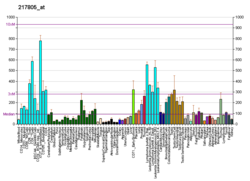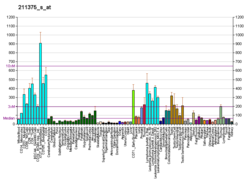| ILF3 | |||||||||||||||||||||||||||||||||||||||||||||||||||
|---|---|---|---|---|---|---|---|---|---|---|---|---|---|---|---|---|---|---|---|---|---|---|---|---|---|---|---|---|---|---|---|---|---|---|---|---|---|---|---|---|---|---|---|---|---|---|---|---|---|---|---|
| |||||||||||||||||||||||||||||||||||||||||||||||||||
| Identifiers | |||||||||||||||||||||||||||||||||||||||||||||||||||
| Aliases | ILF3 , CBTF, DRBF, DRBP76, MMP4, MPHOSPH4, MPP4, NF-AT-90, NF110, NF110b, NF90, NF90a, NF90b, NFAR, NFAR-1, NFAR2, TCP110, TCP80, interleukin enhancer binding factor 3, NFAR110, MPP4110, NFAR-2, NF90c, NFAR90, NF90ctv | ||||||||||||||||||||||||||||||||||||||||||||||||||
| External IDs | OMIM: 603182; MGI: 1339973; HomoloGene: 7785; GeneCards: ILF3; OMA:ILF3 - orthologs | ||||||||||||||||||||||||||||||||||||||||||||||||||
| |||||||||||||||||||||||||||||||||||||||||||||||||||
| |||||||||||||||||||||||||||||||||||||||||||||||||||
| |||||||||||||||||||||||||||||||||||||||||||||||||||
| |||||||||||||||||||||||||||||||||||||||||||||||||||
| Wikidata | |||||||||||||||||||||||||||||||||||||||||||||||||||
| |||||||||||||||||||||||||||||||||||||||||||||||||||
Interleukin enhancer-binding factor 3 is a protein that in humans is encoded by the ILF3 gene. [5] [6]






